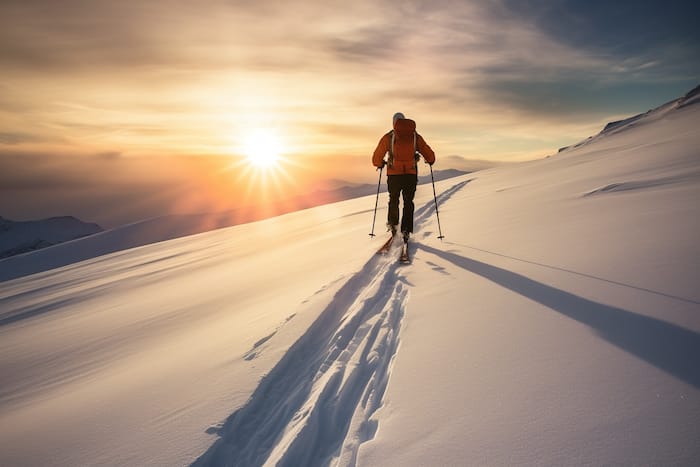Snow tubing, a thrilling winter activity enjoyed by people of all ages, has gained immense popularity in recent years. Just picture yourself flying down a snowy slope on an inflatable tube, feeling the rush of cold air on your face and the adrenaline pumping through your veins.
However, amidst all the excitement, it is crucial not to overlook the importance of selecting appropriate attire for this winter adventure. The clothing you choose can significantly impact your comfort, safety, and overall enjoyment while snow tubing.
The Importance of Choosing Appropriate Attire for Snow Tubing
While snow tubing may not require vigorous physical exertion like skiing or snowboarding do, selecting suitable attire remains vital to ensure your comfort and safety throughout this delightful winter activity. Firstly, dressing appropriately will help regulate your body temperature in changing weather conditions.
Winter temperatures can fluctuate significantly, and even more so when engaging in physical activities. Moreover, the combination of wind chill factor and the speed at which you zoom down the slopes can make it feel even colder than it actually is.
Wearing adequate clothing will help you stay warm and cozy, allowing you to fully enjoy your snow tubing adventure. Secondly, appropriate attire plays a crucial role in protecting your body from potential injuries.
While snow tubing may seem like a relatively safe activity compared to skiing or snowboarding, accidents can still happen. The right clothing can provide an extra layer of cushioning and prevent abrasions or bruises in case of falls or collisions.
Choosing suitable attire for snow tubing ensures that you are prepared for any unexpected weather changes or precipitation that may occur during your adventure. Snow tubing locations often experience varying weather conditions ranging from light flurries to heavy snowfall or even rain.
Having the right gear will keep you dry and shielded from the elements, allowing you to continue enjoying your time on the slopes without discomfort. Now that we understand the basics of snow tubing as a popular winter activity and recognize why choosing appropriate attire is crucial let us delve deeper into understanding the specific factors that should guide our clothing selection for this exciting winter adventure.
Overview of Typical Weather Conditions for Snow Tubing Locations
The weather conditions encountered at snow tubing destinations vary significantly depending on geographical location and altitude. Generally, these locales experience a chilling embrace from winter’s icy grip.
Temperatures often range from below freezing to just above it, creating an environment conducive to snowfall accumulation. Diving deeper into these climatic nuances reveals that wind becomes an important factor to consider as well—wind chill can significantly intensify the perceived coldness and affect your overall comfort level during outdoor activities.
Temperature Range and Wind Chill Factor
The temperature range experienced during snow tubing excursions typically falls between 20°F (-6°C) and 32°F (0°C). These sub-freezing temperatures demand strategic attire choices to ensure maximum warmth without compromising mobility.
However, it is essential to note that wind chill factor plays a crucial role in how cold it feels while zooming down snowy slopes in your tube. Even if the thermometer indicates 32°F (0°C), strong gusts of wind can amplify the perceived temperature by several degrees, making it feel much colder than what is displayed on your conventional weather app.
Possibility of Precipitation: Snow, Sleet, or Rain
Precipitation is another key aspect of weather conditions to evaluate before embarking on a snow tubing adventure. Snow tubing locations are often blessed with consistent snowfall, creating the perfect playground for this exhilarating activity.
However, Mother Nature occasionally throws us a curveball in the form of sleet or rain, which can dampen both your clothes and spirits. Being aware of the possibility of precipitation allows you to make informed decisions when selecting suitable attire that offers both insulation and protection against moisture.
Importance of Checking the Weather Forecast Before Heading Out
As with any outdoor activity, checking the weather forecast is paramount before venturing into the snowy realm of snow tubing. By diligently monitoring weather updates, you can determine not only what to wear but also when it’s safest to enjoy this adrenaline-pumping pursuit.
With today’s technological advancements, accessing real-time weather information has become effortless—so there are no excuses for being caught off-guard by an unexpected blizzard or freezing rain. Stay informed and be prepared to embrace the elements while remaining comfortably shielded from their potential dangers.
Embracing winter’s icy touch requires acknowledging the intricacies of temperature ranges, wind chill factors, chances of precipitation, and staying vigilant by consulting trustworthy weather forecasts. Equip yourself with this knowledge as we delve deeper into crafting a winter wardrobe that will keep you warm, dry, and stylish during your snow tubing escapades.
Layering is Key
The Importance of Layering
When it comes to dressing appropriately for snow tubing, layering your clothing is absolutely crucial. Layering not only helps regulate your body temperature but also provides flexibility in adjusting to changing weather conditions and physical activity levels. By wearing multiple layers, you can effectively trap heat, manage moisture, and protect yourself from the biting cold winds that often accompany snow tubing adventures.
The Base Layer: Optimal Materials
The base layer forms the foundation of your snow tubing attire. Choosing the right materials for this layer is essential to maintain warmth and comfort throughout your adventure. Two excellent options are merino wool and synthetic fabrics.
Merino wool is a fantastic choice due to its exceptional moisture-wicking properties and natural insulation abilities. It keeps you warm even when wet, making it ideal for those exhilarating moments when you may experience snow spray or tumble in the soft powder.
Synthetic fabrics like polyester blends are also popular choices as they possess similar moisture-wicking capabilities while offering enhanced breathability and faster drying times compared to merino wool. These synthetic materials efficiently wick away sweat from your body, keeping you dry and preventing any chill-inducing dampness.
Avoid Cotton: The Nemesis of Warmth
While cotton may seem cozy in everyday situations, it has no place in snow tubing attire due to its poor insulation properties when wet. Cotton absorbs moisture readily but lacks the ability to retain heat when soaked through perspiration or contact with melting snow.
You don’t want to risk feeling cold and uncomfortable because of a soggy cotton base layer that hinders proper temperature regulation. Investing in high-quality merino wool or synthetic base layers will not only keep you warm but also ensure that you stay dry during intense tubing sessions on the slopes.
The Mid-Layer: Amplifying Warmth and Flexibility
The mid-layer serves as an additional insulating barrier, providing that much-needed extra warmth to battle the wintry chill. Fleece and down jackets are popular choices for mid-layers due to their excellent warmth-to-weight ratio and insulation capabilities.
Fleece jackets, made from synthetic materials like polyester, are lightweight, breathable, and known for their ability to retain heat. They provide exceptional insulation without adding unnecessary bulk or restricting movement during physical activity on the snow.
Down jackets, on the other hand, are insulated with down feathers or synthetic alternatives. These jackets offer superior warmth while remaining lightweight and compressible.
Their loftiness traps warm air close to your body while allowing moisture to escape—an essential feature during energetic snow tubing sessions when perspiration is inevitable. When selecting your mid-layer jacket, consider factors such as breathability and flexibility.
Look for styles with ventilation options like zippered underarm vents or mesh-lined pockets that can be opened when you need extra airflow. This will prevent overheating while granting you freedom of movement as you twist, turn, and zoom down the slopes.
The Outer Layer: Shielding Against Snowy Elements
The outer layer is your ultimate defense against snowy elements such as wind, moisture, and freezing temperatures. Investing in a waterproof and windproof jacket and pants is paramount for a comfortable snow tubing experience. These outer garments should be constructed using high-quality technical fabrics that repel water while allowing moisture vapor (perspiration) to escape.
Look for materials like Gore-Tex or similar proprietary membranes that keep external water out but let internal moisture evaporate through microscopic pores. To ensure maximum protection from icy gusts of wind, opt for jackets with adjustable features such as hoods, cuffs (including thumbholes), and waistbands.
These adjustable elements allow you to seal off any gaps where cold air might sneak in—ensuring a snug, insulated fit that keeps you warm and dry throughout your snow tubing adventure. Remember, a well-chosen outer layer will shield you from Mother Nature’s whims, allowing you to fully enjoy the thrill of snow tubing without feeling the biting cold or dampness that could otherwise spoil your experience.
Don’t Forget Your Extremities!
Headwear
When it comes to keeping your head warm during snow tubing, a well-chosen headwear option is paramount. An insulated beanie or skullcap made from materials such as fleece or Merino wool is an excellent choice. These fabrics provide insulation while effectively wicking away moisture, ensuring that your head remains dry and snug throughout your winter adventure. Look for beanies with a snug fit that covers your ears completely for added warmth and protection against the biting cold. Choose a design that suits your style, whether it be a classic knit pattern or a modern twist with pom-poms or ear flaps.
Hands
Protecting your hands from the frigid temperatures is crucial to ensure comfort and dexterity while snow tubing. Opt for waterproof gloves or mittens that offer both insulation and flexibility. Consider mittens if you’re particularly sensitive to the cold, as they allow your fingers to huddle together, increasing warmth by sharing body heat. Look for gloves/mittens with adjustable wrist straps to prevent snow from entering, and ensure they have non-slip grip features on the palms for better control of tubes.
Feet
Keeping your feet warm and dry is essential when participating in any winter activity, including snow tubing. Start by wearing moisture-wicking thermal socks made of materials like Merino wool or synthetic blends that prevent sweat accumulation and keep feet comfortably dry throughout the day. For footwear, go for insulated waterproof boots designed specifically for snowy conditions—preferably ones with non-slip soles offering good traction on icy surfaces.
Final Thoughts
As you prepare for an exhilarating day of snow tubing, don’t underestimate the importance of choosing appropriate attire that ensures both comfort and safety in wintry conditions. By following our detailed guide and layering effectively, you can protect yourself from the elements while enjoying the thrill of sliding down snow-covered hills. Remember to check the weather forecast and choose your clothing accordingly, paying special attention to your headwear, hand protection, and footwear.
So go ahead, embrace the winter wonderland with confidence, knowing that you are dressed appropriately for an unforgettable snow tubing experience. Stay warm and have a blast.


